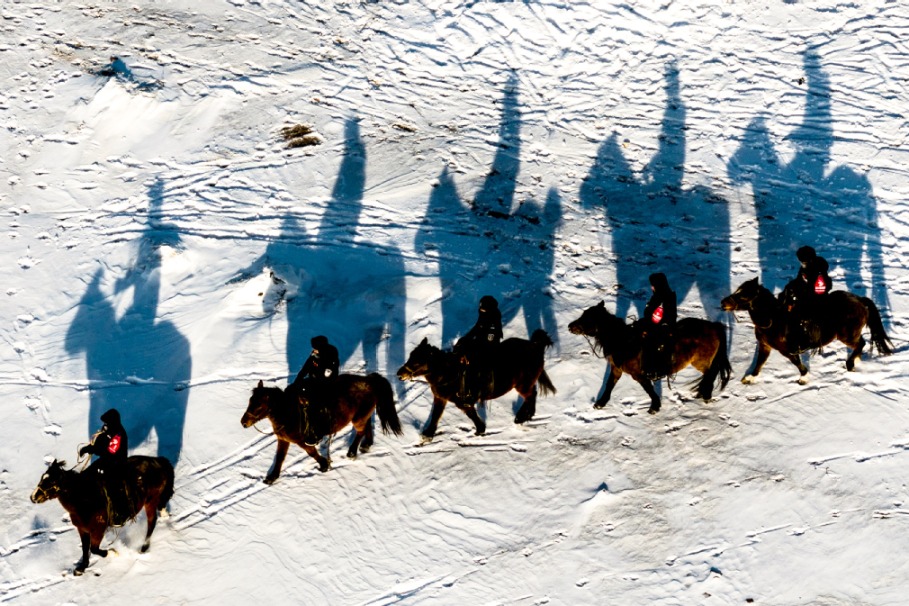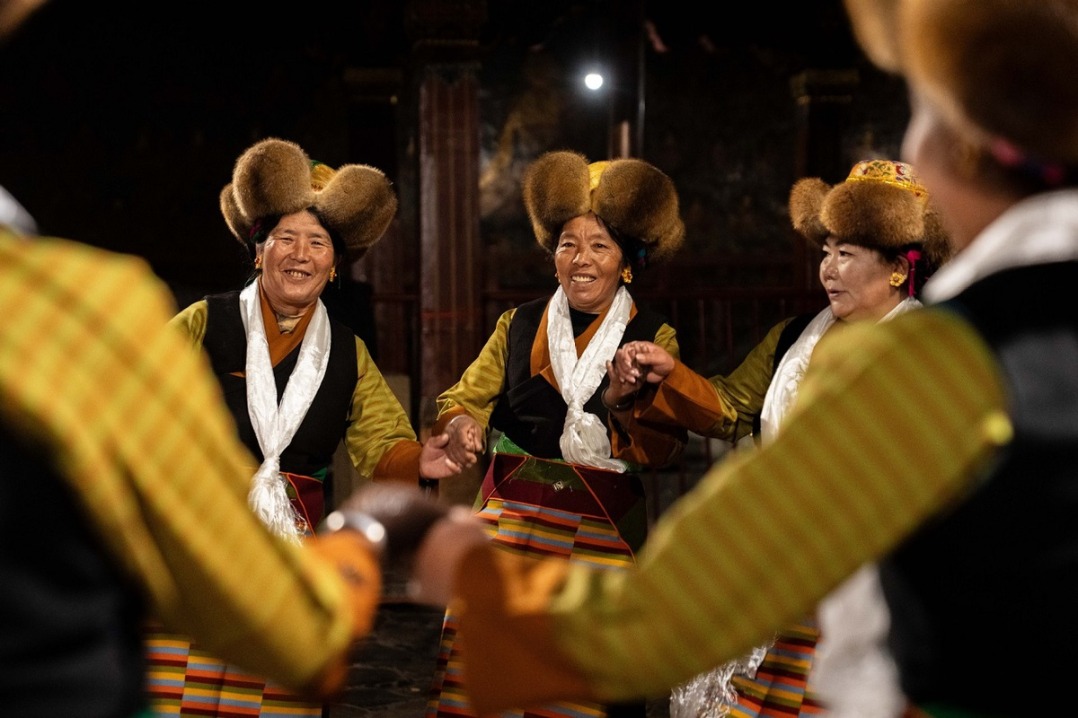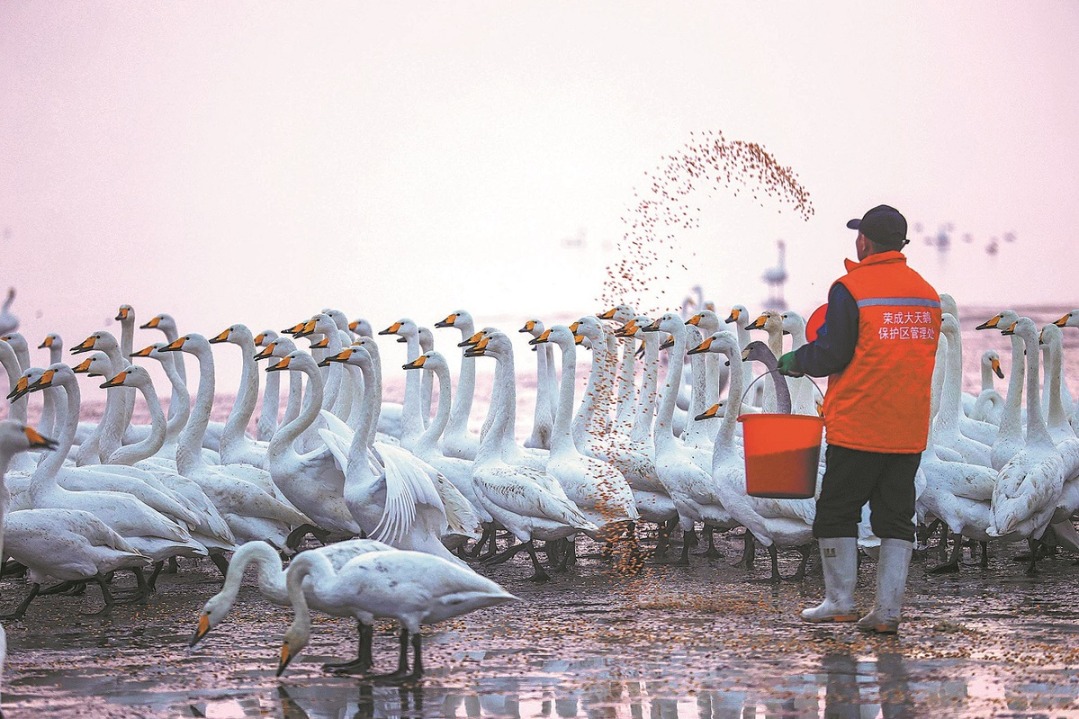Wild horses returned to nature

At first, the animals could not survive very well.
"In the captive-breeding base, we help them cool down in summer by watering them on the road and feeding them watermelons, and in winter we provide them with delicate food. However, in the wild, the climate is usually harsh. It can reach as high as 40C in summer and in winter it is hard for them to hunt for food. Wolves are also a big threat," she said.
But as their numbers in the wild have risen and adaptability improved, their survival rate during the last three years has increased, she said, adding that among the 37 foals born this year, 20 were born in the wild.
"Though these captive-breeding horses have never lived in the wild, they showed their rebellious and wild side when we tried to get them into the cargo. After all, they bear the original genes of ancient horses and the wild should be the only and final habitat for them," she said.
Sun Quanhui, scientist with World Animal Protection, said that the best way to protect wildlife from extinction is to let them live in the wild while protecting their habitat at the same time.
"However, releasing old captive horses into the wild may pose concerns because they are more vulnerable. My suggestion is to strengthen surveillance and management for the old ones in the wild," he said.
"In the long run, more effort should be taken to enlarge the gene pool, such as reintroducing horses from abroad to achieve a more viable population."
- China and France hold joint forum on higher education
- Dinosaur footprints from about 200m years ago found in China
- Free shuttles provided for residents affected by Tai Po fire to vote
- Global influencers unlock scenic and cultural charms of Hechi
- Chinese Navy accuses Japan of interfering with training operations
- 'We can manage for now': HK rallies with fire recovery efforts on track



































